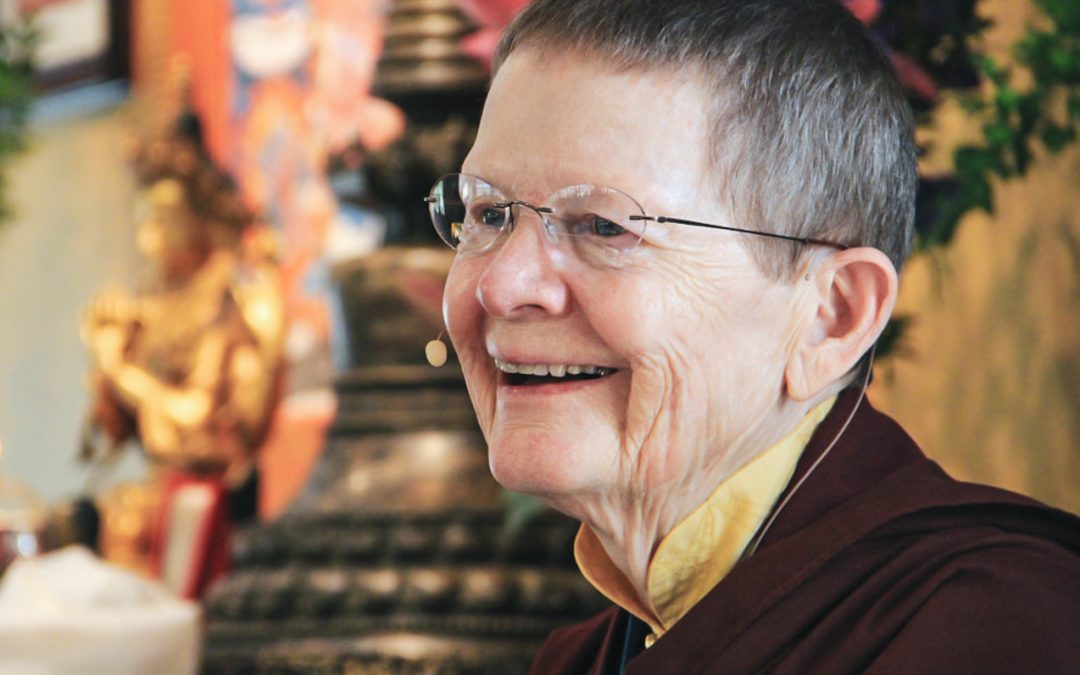When a strong feeling comes up, it will often be accompanied by a strong habitual pattern. These are the emotions where you automatically start to go into your justification or defense, or your story or search for pleasure, or whatever it is you do. This is where we really get stopped in our tracks on our path of awakening.
This is also the very place where we could make enormous progress on the path if we’re willing to allow our thoughts and emotions to become part of our path. When the emotion arises, go to the body and breathe in and out, and at the same time experience the emotion. If you just go to the breath without experiencing the emotion as well, this can be a way of repressing the emotion.
For example, anger comes up, and then you go to breathing as a way to chill out the anger. But you also want to really experience the underlying energy of anger until it no longer has this power over you. Chilling out helps a little bit — breathing in and out — but the anger will still be there to just pop out the next time the causes and conditions arise. It’s there, just as strong, and you’re just as afraid of it as ever — maybe even more afraid. Because every time you repress it, you’re becoming more afraid of it; it’s becoming more of an opponent. And it’s bigger than you.
So experience the emotion. Breathing is a way of staying present; it anchors you. Because if you just go to the felt experience without the breath, my experience and the experience of other meditators has been that you can drown in it. This leads to overwhelm.
You need to breathe with the emotion; you don’t breathe it away. If the emotion does dissipate, fine. That’s what just happened — and it does happen. Let it be like that. But the point is to go to our experience rather than to go to our strategies or our conceptual ways of exiting. You’re breathing the emotion in, and so you’re being with it. You are it, actually. You could even imagine that you are breathing the emotion into the heart.
Imagine you are breathing it into the heart — the large heart — if that helps you. Breathing the emotion in is the basis for empathy, for being able to stand in someone else’s shoes. You’re feeling anger or fear or jealousy or poverty, and then as you breathe in, there could be the recognition that billions and zillions of people feel this right this moment, and they have felt this in the past, and they will feel this in the future. You’re touching into a universal experience. For you it might have a particular story line, but it’s still a universal experience.
This isn’t easy, but it’s important that you allow yourself to experience whatever feeling or resistance arises in you. For example, I’ve found that often when we start working with emotions, a lot of people get really drowsy because they don’t want to do this work. If you find that’s true for you, you can just experience the drowsiness. You’re moving toward a way to include emotional distress as your path of awakening.
Ken McLeod says that in order to truly experience something in the moment, there are two exits that you are choosing not to take. One, you are choosing not to act out by speaking, acting, or doing. Two, you are choosing not to repress anything. This is a standard meditation instruction that you can embody in the entirety of your life: do not act out and do not repress. See what happens if you don’t do either of those things.
When you act out, the energy of your emotion goes into the action. In other words, you deflect the energy from the actual uncomfortable experience. I’ve found that when we do this, the energy comes back again and again and again. When you repress what happens, the energy that you’re trying to move away from gets locked in your body, and it manifests as physical pain and illness.
Mingyur Rinpoche said that when you use emotions as a support and a friend rather than deflecting or repressing them, three things can happen. First, you turn your attention on the emotions, and as a result they disappear. Second, they might intensify. That’s what often happens to me. Third, they remain the same. He says, “They disappear just as they are. They intensify just as they are. They stay the same just as they are.” It’s not like you’re supposed to have a certain result. And we don’t have to label these experiences as “good” or “bad.”
One of the things that I and many other meditators have noticed is that, over time, when we stay with our emotions and breathe with them, the emotions can morph. Here is where we really develop the understanding that emotions are just energy; we see that emotions are simply energy that we attach our thoughts and stories to. Anger morphs into sadness, or it morphs into loneliness, or perhaps it even morphs into happiness. All of this can happen.
And what I’d say when you begin to notice this is “Welcome to the lineage of meditators.”
How to Meditate: A Practical Guide to Making Friends with Your Mind
Pema Chödrön

